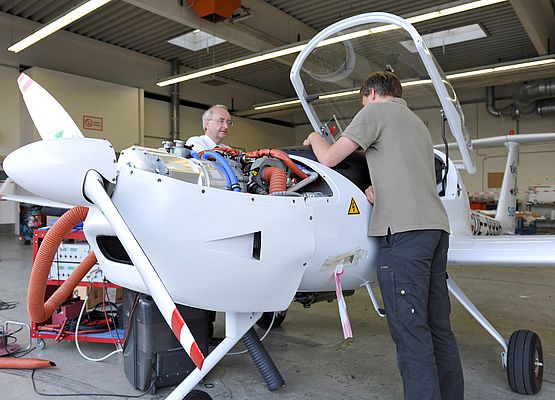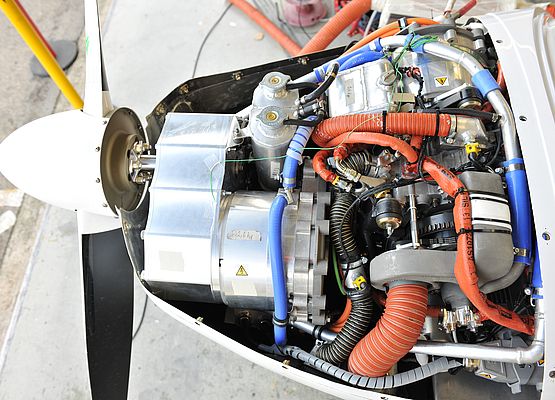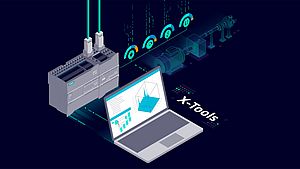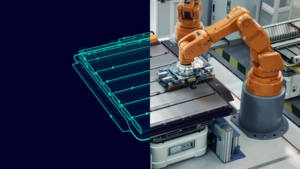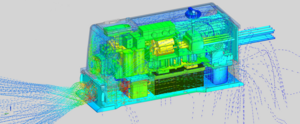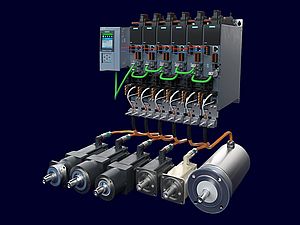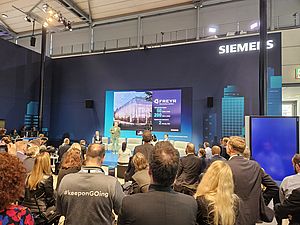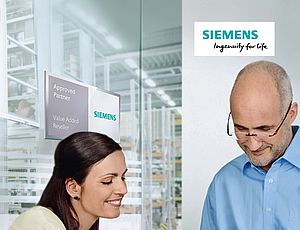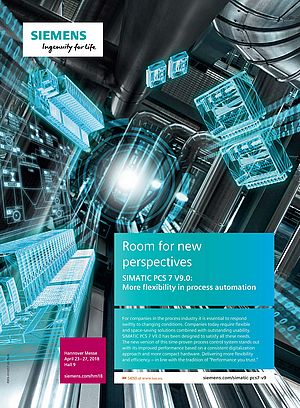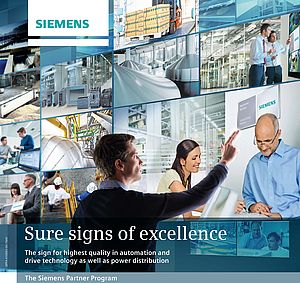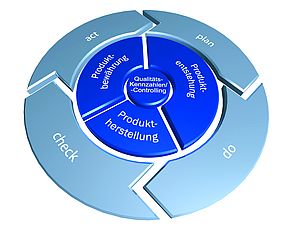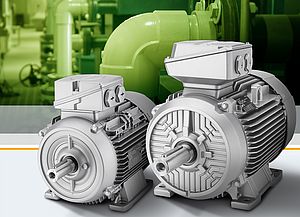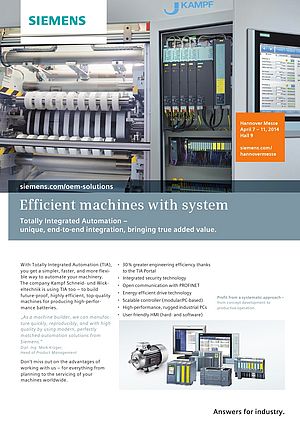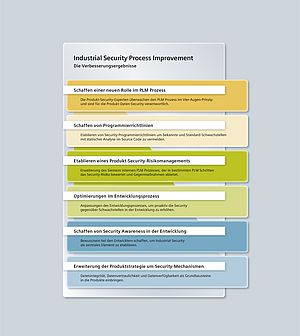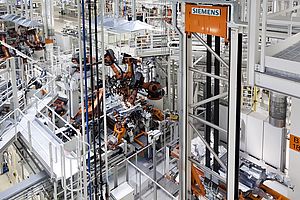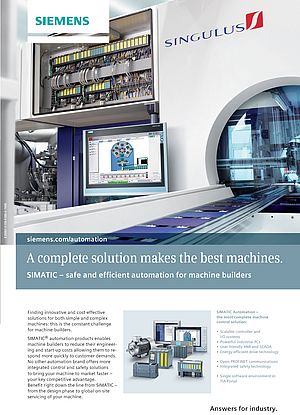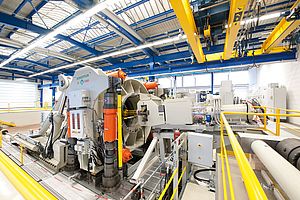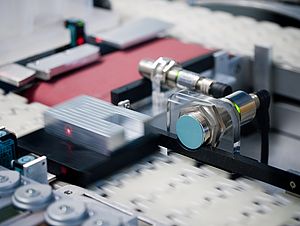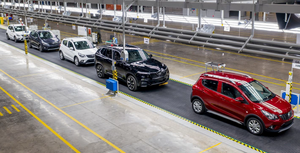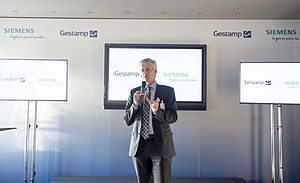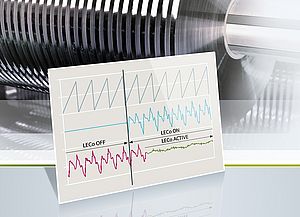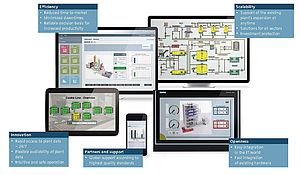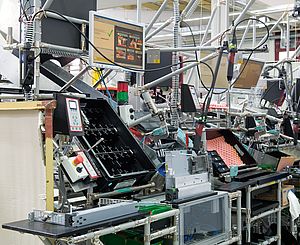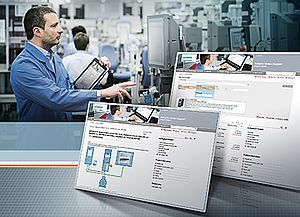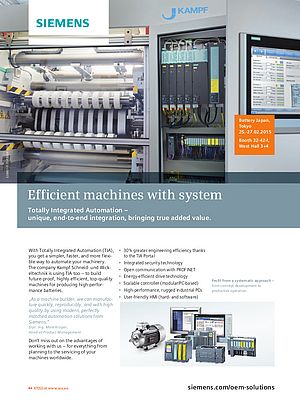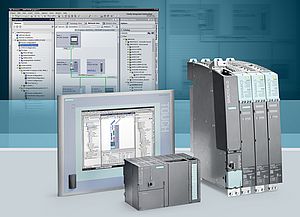Three partners built the first aircraft with a serial hybrid electric drive system. In the future, the technology will cut fuel consumption and emissions by 25% compared to today’s most efficient aircraft drives.
The world’s first aircraft with a serial hybrid electric drive system was built by Siemens, Diamond Aircraft and EADS to test the hybrid electric drive concept. In the future, the technology will cut fuel consumption and emissions by 25 percent, compared to today’s most efficient aircraft drives. The Siemens Drive Technologies Division supplied the drive train comprising motor, converter and control electronics and utilized the drives and engineering expertise already gained in industrial areas.
Air traffic accounts for some 2.2 percent of CO2 emissions worldwide. For this reason, aircraft, too, must become more efficient. One possible solution – which Siemens and its partners Diamond Aircraft and EADS are testing in the DA36 E-Star motor glider – is to electrify the drive system. The motor glider, which is based on Diamond Aircraft’s HK36 Super Dimona is the first to use a so-called serial hybrid electric drive, which has been utilized to date only in cars, as an integrated drive train. The plane’s propeller is powered by a 70kW electric motor from Siemens. Electricity is supplied by a small Wankel engine from Austro Engine with a generator that functions solely as a power source. A Siemens converter supplies the electric motor with power from the battery and the generator. Fuel consumption is very low since the combustion engine always runs with a constant low output of 30 kW. A battery system from EADS provides the increased power required during takeoff and climb. The accumulator is recharged during the cruising phase.
“The serial hybrid electric drive concept makes possible a quiet electric takeoff and a considerable reduction in fuel consumption and emission,” said Christian Dries, the owner of Diamond Aircraft. “It also enables aircraft to cover the required long distances.” In comparison to the most efficient state-of-the-art technologies now available, the electric drive is to save 25 percent of fuel and emissions. The technology is to be tested initially on small airplanes, but in the long term this drive will also be used in larger aircraft.
The Siemens Drive Technologies Division supplied a low-voltage motor on permanent-magnet basis, a frequency converter and the control electronics. Siemens utilizes the expertise gained in the implementation of the integrated electric drive train in other areas, for example, as main propulsion engine for cruise ships. Ralf-Michael Franke, CEO of the Siemens Drive Technologies Division stated: “This example enables us to demonstrate our competence in the entire drive train. We combine our comprehensive drives portfolio with engineering and industry know-how and adapt the components to the customer’s specific application. In this way, we can supply our customers with the ideal drive train which will enable them to efficiently drive a ship and a hybrid bus or fly an aircraft.”
The next development step will be to further optimize the integrated drive train. Siemens scientists are currently working on a new electric motor that is expected to be five times lighter than conventional drives. In two years, another aircraft is expected to be equipped with an ultra-light electric drive. The electric motor glider successfully completed its first flight at the Wiener Neustadt airfield in Vienna, Austria on June 8, 2011.



